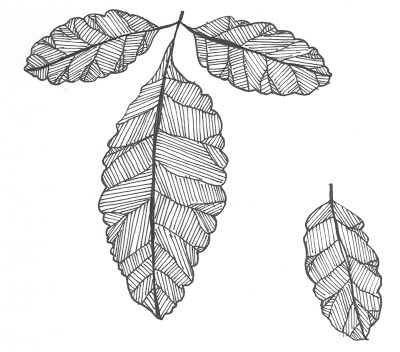

There are two types of caching behavior: larder hoarding, where a species creates a few large caches which it often defends, and scatter hoarding, where a species will create multiple caches, often with each individual food item stored in a unique place. The western scrub jay is noted for its particular skill at caching. Some common animals that cache their food are rodents such as hamsters and squirrels, and many different bird species, such as rooks and woodpeckers. Hoarding is done either on a long-term basis – cached on a seasonal cycle, with food to be consumed months down the line – or on a short-term basis, in which case the food will be consumed over a period of one or several days. The term hoarding is most typically used for rodents, whereas caching is more commonly used in reference to birds, but the behaviors in both animal groups are quite similar. However, there is evidence that some amount of caching or hoarding is done in order to ripen the food, called ripening caching. Most commonly, the function of hoarding or caching is to store food in times of surplus for times when food is less plentiful. Hoarding or caching in animal behavior is the storage of food in locations hidden from the sight of both conspecifics (animals of the same or closely related species) and members of other species. As we left the venue, in the entryway we had walked through on our way in, a giant acorn had appeared: sitting on a mound of soil, it sprouted a single tendril of green leaves.Western scrub jays cache food such as acorns and insects.

Despite it all, therefore, an undeterred willingness to salvage and improve. Steering away from greenwashing, it still listed the collection’s organic cottons, sustainably sourced viscose, second hand and up-cycled metal trimmings as evidence of their dedication to the cause – and Loverboy’s commitment to uncomplicated supply chains, and their support of artisanal craftspeople. The brand’s ‘Manifesto for Conscious Practice’ besides, printed on the reverse of the press release, stressed how there was more to this show than the desire of raising awareness, by now a byline when little else is done, about the danger of a climate catastrophe in the near future. Both tribes – the ‘danders’, a physical, muscular variation of dandies with gravity-defying quiffs and the ‘glaedyhoots’, watercolour-flush, their flowing dresses and exposed skins all painted with ‘naturalistic reminiscences from a world in which only traces of nature remain’ – draw inspiration from the Festival of the Horse in the Scottish Orkney Islands, for an overall atmosphere yet more folkloric than usual, and a nod to Jeffrey’s own much perused Scottish heritage. Something of Jarman’s Jubilee informs this narrative, with a musical theatre twist. If any imagination at all was needed, what Jeffrey conjured was a ‘barren, undone world’, whose face-painted dwellers had split into two tribes facing one another for a final dance off, with survival as price and prize. For all its indubitable sex appeal, to which the audience’s gasps can account for, the collection was, truly, but a well-dressed tragedy – if by well-dressed we understand not what passes for pretty or chic, but the sculptural excess of jaw-dropping costumes, of cages under skirts and tartan worn as armour, of spiral-ruffled sleeves and tailoring that hails the return of the waist in menswear. Titled Hell Mend You, Charles Jeffrey’s show last night was, so said the notes, a ‘dance to the death’. Four nights into a new decade, what the future holds is as much on our minds as all that we’ve left behind, all that we’ve left to rot. The models, who were making rounds through the theatre’s hall paused in front of the big dead tree as if distracted, worshipful – as if stopping for a bow in front of an altar of the past: those CDs, that nature. It made for a mirror image, lustrous and sumptuous but just as sombre as those pine trees’ skeletons abandoned on the pavement, just outside the Battersea Arts Centre, which we’d walked past on our way in. A carved-up tree trunk piece, large as a hut, stood on a platform at the end of Charles Jeffrey’s Loverboy fall 2020 runway show, countless CDs glued to its bark and a disco ball suspended above it like a Christmas star.


 0 kommentar(er)
0 kommentar(er)
